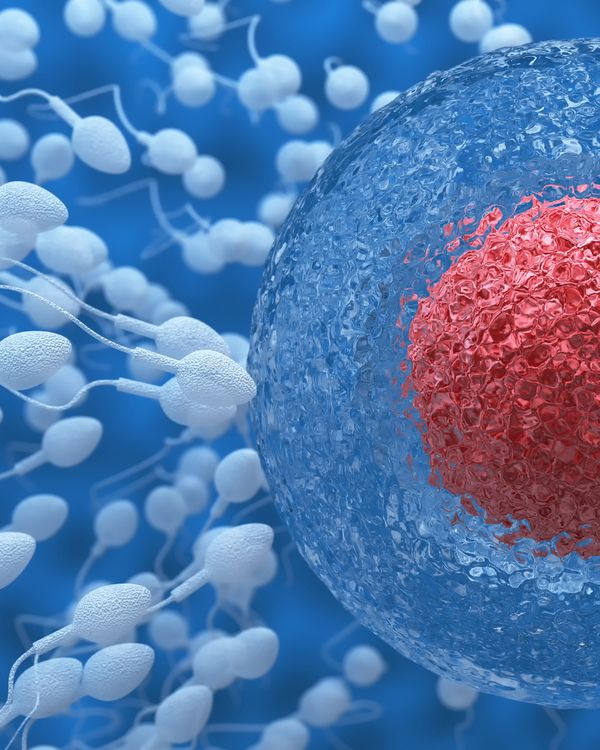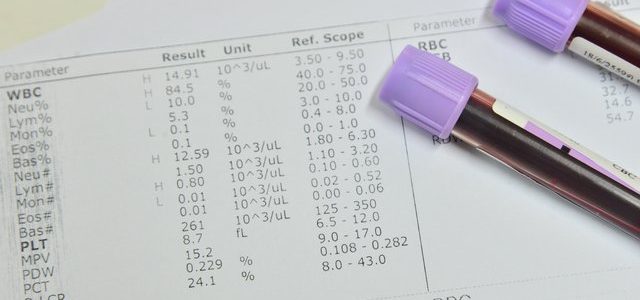What is Sperm Test?
A sperm test, also known as a semen analysis, is a diagnostic procedure performed to evaluate the health and quality of a man’s sperm. It is a crucial test in determining male fertility and can provide valuable insights into the potential causes of infertility.
The purpose of a sperm test is to assess various parameters of semen, including sperm count, motility, morphology, and other characteristics. The analysis of these parameters helps determine the overall quality of the sperm and its ability to fertilize an egg successfully.
Sperm count refers to the number of spermatozoa present in a given sample of semen. This parameter is important because a higher sperm count increases the chances of successful fertilization. Low sperm count, also known as oligospermia, can significantly impact fertility and may require further investigation or treatment.
| Sperm Motility | Sperm Morphology |
|---|---|
| Sperm motility refers to the ability of sperm to swim and move effectively. It is a crucial factor in determining the sperm’s ability to reach and penetrate the egg for fertilization. A significant percentage of progressively motile sperm is considered vital for optimal fertility. | Sperm morphology refers to the size, shape, and structure of sperm. Abnormal morphology can indicate potential issues with sperm development or maturation, which may affect fertility. Normal sperm morphology is essential for successful fertilization. |
During a sperm test, a semen sample is collected and analyzed in a laboratory setting. The sample is typically obtained through masturbation and collected in a sterile container provided by the healthcare professional. It is important to follow specific instructions provided by the healthcare provider to ensure an accurate analysis.
Once the sample is collected, it is examined under a microscope, and various parameters are measured and evaluated. The results of the sperm test provide valuable information to healthcare professionals in identifying potential causes of infertility and developing an appropriate treatment plan.
In conclusion, a sperm test is a vital diagnostic tool used to assess male fertility. It provides essential information about sperm count, motility, morphology, and other characteristics that play a crucial role in successful fertilization. Through a comprehensive evaluation of these parameters, healthcare professionals can identify potential issues and recommend appropriate treatment options. If you have concerns about your fertility, consulting a healthcare professional and undergoing a sperm test can help provide valuable insights into your reproductive health.
What is the Purpose of Sperm Analysis?
Sperm analysis, also known as a semen analysis, is a diagnostic tool used by healthcare professionals to assess male fertility. It involves examining various parameters of semen to evaluate the quality and quantity of sperm present. The primary purpose of sperm analysis is to determine and diagnose any underlying issues that may be affecting a man’s reproductive health. By assessing parameters such as sperm count, motility, morphology, and other factors, healthcare providers can gain insights into potential causes of infertility and develop appropriate treatment plans.
Assessment of Sperm Count and Mobility
One of the key parameters evaluated during sperm analysis is sperm count, which refers to the number of sperm present in a given sample. Having a sufficient sperm count is crucial for successful fertilization. A low sperm count, also known as oligospermia, can significantly impact fertility. Another important factor assessed is sperm motility, which refers to the ability of sperm to swim and move effectively. Poor sperm motility, known as asthenospermia, can hinder the sperm’s ability to reach and fertilize the egg. Assessing both sperm count and motility provides valuable information regarding the overall sperm health and fertility potential of an individual.
What is Sperm Morphology?
Sperm morphology refers to the structure and shape of the sperm cells. Morphologically normal sperm are more likely to have the ability to fertilize an egg successfully. Abnormal sperm morphology, also known as teratospermia, can affect fertility as it may hinder the sperm’s ability to penetrate the outer layer of the egg. Sperm analysis evaluates the percentage of sperm that have a normal shape and structure, which provides insights into the potential reproductive issues an individual may be experiencing.
| Parameter | Normal Range |
|---|---|
| Sperm Concentration | 15 million or more sperm per milliliter |
| Sperm Motility | 40% or more of sperm showing progressive movement |
| Sperm Morphology | 4% or more of sperm with normal shape and structure |
Understanding the Normal Sperm Values
Normal sperm values refer to the range considered to indicate optimal fertility. These values provide a guideline for healthcare professionals to assess an individual’s reproductive health. It is important to note that normal sperm values may vary slightly between laboratories and healthcare providers. Generally, a sperm concentration of 15 million or more sperm per milliliter, with at least 40% showing progressive movement, and at least 4% having a normal shape and structure, is considered within the normal range.
In conclusion, sperm analysis plays a vital role in assessing male fertility and identifying potential reproductive issues. It provides valuable information about sperm count, motility, morphology, and other parameters that impact fertility. By understanding the purpose and significance of sperm analysis, individuals and healthcare providers can make informed decisions regarding fertility treatment options and improve the chances of successful conception.
Assessment of Sperm Count and Mobility
In order to assess male fertility, a sperm test, also known as a semen analysis, is conducted. This test provides valuable information about the quantity, quality, and mobility of sperm present in a semen sample. The *purpose* of a sperm analysis is to determine the likelihood of a man being able to father a child successfully. It helps diagnose potential fertility issues and aids in deciding the most appropriate treatment options.
Assessment of *sperm count* is a crucial aspect of a semen analysis. The number of sperm present in a sample indicates the fertility potential of a man. A low sperm count, also known as oligospermia, may reduce the chances of achieving pregnancy. Generally, a normal sperm count ranges between 15 million to more than 200 million sperm per milliliter of semen. Anything below this range may suggest infertility or other underlying issues.
*Sperm mobility*, or motility, is another important factor evaluated in a sperm analysis. It refers to the ability of sperm to move effectively and actively in order to reach and fertilize an egg. Poor sperm motility can significantly impact the chances of fertilization, as immobile or sluggish sperm may struggle to swim the required distance to reach the egg. The criteria for assessing sperm motility often include determining the percentage of progressively moving sperm as well as the total percentage of sperm with any form of movement.
To summarize, a semen analysis helps determine the sperm count and mobility, both of which are crucial in assessing male fertility. A low sperm count or poor motility may indicate potential fertility issues, making it important to seek appropriate treatment options. If you are planning to start a family and have concerns about fertility, consulting with a healthcare professional and considering a sperm analysis can provide valuable insights and guidance.
| Sperm Test Parameters | Normal Range |
|---|---|
| Sperm Count | 15 million – 200 million sperm/ml |
| Sperm Mobility | At least 32% progressively motile or 40% total motile sperm |
The table above summarizes the normal ranges for sperm count and mobility in order to assess male fertility. Any values falling below these ranges may require further evaluation and potential treatment options. It is important to keep in mind that a single sperm analysis may not provide a complete picture of male fertility, and multiple tests may be recommended to ensure accurate results.
In conclusion, the assessment of sperm count and mobility plays a significant role in evaluating male fertility potential. A sperm analysis provides valuable information about the quantity and quality of sperm, aiding in identifying potential fertility issues and guiding treatment decisions. If you have concerns about fertility, seeking medical advice and considering a semen analysis can help answer your questions and guide you towards the most appropriate steps towards starting or expanding your family.
What is Sperm Morphology?
Sperm morphology refers to the size and shape of sperm cells. It is an important aspect of sperm analysis and is often evaluated alongside other factors such as sperm count and mobility. The morphology of sperm can provide valuable insights into male fertility and help diagnose potential issues that could affect the ability to conceive.
During a sperm analysis, a sample of semen is collected and examined under a microscope. The shape of the sperm cells is assessed using specific criteria set by the World Health Organization (WHO). The WHO provides guidelines for normal sperm morphology, including the size, shape, and presence of any abnormalities. Sperm cells with normal morphology are considered to have a higher chance of successfully fertilizing an egg.
Sperm morphology can be affected by various factors, including genetic abnormalities, environmental factors, and lifestyle choices. Certain genetic conditions, such as chromosomal abnormalities or genetic mutations, can result in sperm abnormalities. Exposure to toxins, such as tobacco smoke or excessive alcohol consumption, can also affect sperm morphology.
In addition to using the sperm morphology as an indicator of fertility, it can also be used to assess the success of assisted reproductive techniques. For example, in procedures like in vitro fertilization (IVF), selecting sperm cells with normal morphology can increase the chances of successful fertilization and pregnancy.
| Sperm Morphology | Normal | Abnormal |
|---|---|---|
| Head Shape | Oval or ellipsoid | Round or tapered |
| Tail Shape | Straight | Crooked or coiled |
| Size | Approximately 5-6 micrometers (µm) | Smaller or larger than normal |
| Presence of Abnormalities | None | Bent, double-headed, or multiple abnormalities |
It is important to note that sperm morphology is just one aspect of sperm analysis and should be considered in conjunction with other factors. A comprehensive evaluation of sperm parameters can provide a more accurate assessment of male fertility. If abnormalities in sperm morphology are detected, further tests and evaluations may be necessary to determine the underlying cause and appropriate treatment options.
What Are Normal Sperm Values?
What Are Normal Sperm Values?
What Are Normal Sperm Values?
When it comes to male fertility, understanding the normal values of sperm parameters is crucial. Sperm analysis, also known as a semen analysis or sperm test, is a standard diagnostic tool used to assess the quality and health of a man’s sperm. This test provides valuable information about various aspects of sperm, such as count, mobility, morphology, and more.
Sperm analysis is typically performed in a laboratory by a trained specialist. The analysis involves collecting a sample of semen, which is then examined under a microscope. Through this evaluation, several vital parameters are measured to determine the status of a man’s fertility.
One of the key indicators assessed during a sperm analysis is the sperm count. The sperm count refers to the number of sperm cells present in a given volume of semen. A normal sperm count is typically considered to be above 15 million per milliliter (mL) of semen. However, it is important to note that a lower sperm count does not necessarily mean a man is infertile, as conception can still occur with lower counts.
- Sperm Mobility:
Sperm mobility, or motility, refers to the ability of sperm cells to move and swim effectively. This parameter is crucial for fertilization, as it enables the sperm to reach and penetrate the egg. Normal sperm mobility is defined as having at least 40% of the sperm cells exhibiting progressive or forward movement within one hour. However, even if the mobility is slightly lower than the ideal range, fertilization can still occur.
- Sperm Morphology:
Sperm morphology refers to the size and shape of the sperm cells. Abnormalities in sperm morphology can affect sperm function and reduce the chances of successful fertilization. Normal sperm morphology is typically defined as having at least 4% or more sperm cells with a normal shape and structure.
| Sperm Parameter | Normal Range |
|---|---|
| Sperm Count | Above 15 million per mL |
| Sperm Mobility | At least 40% exhibiting progressive movement |
| Sperm Morphology | At least 4% normal-shaped cells |
It is important to remember that these values are not absolute determinants of fertility. Other factors, such as the overall health of the individual and the female partner’s fertility, also play a significant role. Consulting with a healthcare professional or fertility specialist is advised to understand the full context of these results and to explore further treatment options, if necessary.
In conclusion, understanding the normal sperm values is essential for assessing male fertility. The sperm test provides information on various parameters, including sperm count, mobility, and morphology. However, it is important to seek professional guidance to interpret these results accurately and explore suitable treatment options for individuals and couples facing fertility challenges.
Treatment for Low Sperm Count
If you and your partner are struggling to conceive, one potential factor to consider is a low sperm count. A low sperm count, also known as oligospermia, can significantly impact fertility. But the good news is that there are various treatment options available to help improve sperm count and increase the chances of conception.
One common treatment for low sperm count is hormone therapy. This involves taking medications that can help stimulate the production of sperm. Hormone therapy is often recommended for men who have low testosterone levels or hormonal imbalances that may be affecting their sperm count. By restoring hormonal balance, it can improve sperm production and increase fertility.
Another treatment option for low sperm count is lifestyle changes. Certain lifestyle factors, such as smoking, excessive alcohol consumption, and poor diet, can negatively affect sperm production. By making simple modifications, such as quitting smoking, reducing alcohol intake, and adopting a healthier diet, men can improve their sperm count and overall sperm quality.
In some cases, surgery may be required to treat low sperm count. Surgical procedures such as varicocele repair or vasectomy reversal can help improve sperm production and increase the chances of conception. These procedures aim to correct any physical obstructions or abnormalities that may be preventing sperm from reaching the ejaculate.
| Benefits of Treatment for Low Sperm Count: |
|---|
|
|
|
|
Treatment for low sperm count should always be discussed with a healthcare professional who specializes in reproductive medicine. They can evaluate your specific situation, conduct necessary tests, and recommend the most suitable treatment options tailored to your needs.
Nutrition Recommendations to Improve Sperm Quality
Proper nutrition plays a crucial role in maintaining overall health and well-being, including reproductive health. When it comes to male fertility, the quality of sperm is one of the most important factors for successful conception. Several dietary choices and nutrients have been linked to improved sperm quality. In this blog post, we will explore the nutrition recommendations that can help enhance sperm quality and increase the chances of conception.
1. Antioxidant-rich Foods: Including antioxidant-rich foods in your diet can help combat oxidative stress, which is known to negatively impact sperm health. Fruits and vegetables such as berries, tomatoes, spinach, and broccoli are excellent sources of antioxidants. Consuming a variety of these foods can help protect sperm from damage and improve their overall quality.
2. Essential Fatty Acids: Omega-3 fatty acids, specifically docosahexaenoic acid (DHA) and eicosapentaenoic acid (EPA), have been found to have positive effects on sperm health. These fatty acids are abundantly found in fatty fish like salmon, trout, and sardines. Including these fish in your diet can provide a good dose of essential fatty acids, which can help improve sperm quality and motility.
3. Zinc and Selenium: These two trace minerals are vital for optimal sperm production and function. Zinc-rich foods include oysters, beef, poultry, and pumpkin seeds. Selenium can be found in Brazil nuts, seafood, and eggs. Adequate intake of both zinc and selenium is associated with improved sperm quality, so incorporating these foods into your diet is beneficial.
| Nutrient | Food Sources |
|---|---|
| Zinc | Oysters, beef, poultry, pumpkin seeds |
| Selenium | Brazil nuts, seafood, eggs |
4. Vitamin C and E: Both vitamin C and E are powerful antioxidants that can help protect sperm from oxidative damage. Citrus fruits, strawberries, kiwi, and leafy greens are rich sources of vitamin C. Almonds, sunflower seeds, and spinach provide good amounts of vitamin E. Including these foods in your diet can support sperm health and improve fertility.
5. Limit Processed Foods: Processed foods often contain high levels of unhealthy fats, added sugars, and artificial additives. These can negatively impact sperm quality and overall reproductive health. It is important to limit the consumption of processed foods and instead focus on whole, nutrient-dense foods to optimize sperm quality.
By incorporating these nutrition recommendations into your diet, you can improve sperm quality and increase the chances of successful conception. Remember, a balanced diet rich in antioxidants, essential fatty acids, and key nutrients is essential for optimal reproductive health. Consult with a healthcare professional or a registered dietitian for personalized advice and guidance.
How to Increase Sperm Count?
Sperm count plays a crucial role in male fertility and the ability to conceive a child. Many couples struggle with fertility issues, and low sperm count is one of the common factors contributing to this challenge. If you and your partner are trying to conceive, you may be wondering what steps you can take to increase sperm count. In this blog post, we will explore various strategies and lifestyle changes that can help you boost your sperm count naturally.
1. Maintain a Healthy Lifestyle:
Eating a balanced diet, exercising regularly, and managing stress levels can have a positive impact on sperm count. Incorporate foods rich in antioxidants, such as fruits, vegetables, and whole grains, into your diet. These foods help protect the sperm from damage and increase their overall quality. Regular exercise not only improves blood circulation but also helps maintain a healthy weight, which is essential for optimal sperm production.
2. Avoid Excessive Heat:
High temperatures can negatively affect sperm production. To increase your sperm count, it’s important to avoid activities that generate excessive heat in the groin area. This includes avoiding hot baths, saunas, and tight-fitting underwear. Opt for loose-fitting clothing that allows for proper airflow to the testicles.
3. Quit Smoking and Limit Alcohol Consumption:
Smoking is known to lower sperm count and impair sperm quality. If you’re a smoker, quitting smoking can significantly improve your chances of increasing sperm count. Additionally, excessive alcohol consumption can also decrease sperm count. Limit your alcohol intake or preferably avoid it altogether to enhance your fertility.
| Summary: |
|---|
| Increasing sperm count can be achieved through lifestyle modifications and adopting healthy habits. By maintaining a balanced diet, avoiding excessive heat, quitting smoking, and limiting alcohol consumption, you can enhance your fertility and increase the chances of conception. It’s essential to consult with a healthcare professional for personalized advice and guidance tailored to your specific situation. |
Treatment Options After Sperm Analysis
After a sperm analysis, it is important to consider the treatment options available to address any issues or abnormalities found. Treatment options will vary depending on the specific results of the analysis and the underlying factors contributing to the abnormal sperm parameters. It’s crucial to consult with a healthcare professional or a fertility specialist to determine the most suitable course of action.
1. Lifestyle Changes: In many cases, making certain lifestyle changes may help improve sperm quality and increase the chances of conception. This can include maintaining a healthy weight, avoiding excessive alcohol consumption and smoking, managing stress levels, and getting regular exercise. Adopting a balanced diet rich in fruits, vegetables, whole grains, and lean proteins can also contribute to better sperm health.
2. Medications: Depending on the underlying cause of the abnormal sperm analysis, the healthcare provider may recommend certain medications. For example, if the analysis reveals low testosterone levels, hormone replacement therapy or medications such as clomiphene citrate may be prescribed to stimulate sperm production. In cases where an infection is causing sperm abnormalities, antibiotics may be prescribed to treat the infection.
3. Assisted Reproductive Techniques: In more severe cases, where the sperm analysis results indicate very low sperm count, poor sperm motility, or abnormal sperm morphology, assisted reproductive techniques may be recommended. These techniques include procedures like intrauterine insemination (IUI) or in vitro fertilization (IVF). During IUI, washed and concentrated sperm is directly inserted into the woman’s uterus, increasing the chances of fertilization. IVF involves the retrieval of eggs from the woman’s ovaries and the fertilization of those eggs with sperm in a laboratory setting before the embryo is transferred to the woman’s uterus.
It is crucial to remember that the appropriate treatment option will depend on various factors, including the couple’s overall health, age, and the nature of the abnormal sperm analysis. Seeking professional guidance and undergoing fertility evaluations with a specialist will ensure that the most suitable treatment is pursued and increase the chances of a successful pregnancy.
How Do We Know if Sperm Has Entered the Egg?
When it comes to the process of fertilization, it is essential to understand how we can determine if sperm has successfully entered the egg. Once the sperm reaches the egg in the fallopian tube, it undergoes a series of intricate events to penetrate and fertilize the egg. One of the critical steps in this process is the release of enzymes from the sperm that enable it to break through the outer layer of the egg, known as the zona pellucida. This allows the sperm to enter the egg’s cytoplasm and initiate fertilization.
After the sperm has entered the egg, certain molecular and cellular changes occur in both the sperm and the egg. One of the most significant changes is the formation of a fertilization cone or membrane block that prevents any additional sperm from entering the egg. This block ensures that only one sperm can fertilize the egg, maintaining the integrity of the genetic material and preventing multiple fertilizations.
Moreover, the fusion of the sperm and the egg triggers a series of biochemical reactions within the egg. These reactions include the release of calcium ions, which serve as a signaling mechanism and play a crucial role in activating various cellular processes involved in fertilization. These processes ultimately lead to the formation of a zygote, which is the initial stage of embryonic development.
| Key Factors | Important Points |
|---|---|
| Fertilization Cone | The fertilization cone or membrane block prevents additional sperm from entering the egg. |
| Calcium Ion Release | The release of calcium ions in the egg triggers biochemical reactions necessary for fertilization. |
Factors Affecting Sperm Health
Sperm health is an important factor when it comes to fertility and reproductive health. Various factors can influence the overall health and quality of sperm, which ultimately affects the chances of conception. Understanding these factors can be crucial for individuals or couples who are trying to conceive or seeking fertility treatments.
One of the primary factors that can affect sperm health is age. As men age, the quality and quantity of their sperm may decline. This decline in sperm health can lead to decreased fertility and an increased risk of genetic abnormalities in offspring. Therefore, it is important for men to be aware of the potential impact of age on their sperm health.
Stress can also play a role in sperm health. High levels of stress can affect hormone levels and disrupt normal sperm production. It is important for individuals to find effective ways to manage stress, such as through exercise, relaxation techniques, or seeking support from loved ones.
- Additionally, lifestyle choices can significantly impact sperm health. Factors such as tobacco and alcohol use, drug abuse, and poor diet can all have negative effects on sperm quality and quantity. It is important to adopt a healthy lifestyle by avoiding these substances and maintaining a balanced diet.
Environmental factors can also have an impact on sperm health. Exposure to certain chemicals, radiation, and high temperatures, such as those from hot tubs or saunas, can all affect sperm production and quality. It is essential to minimize exposure to these factors whenever possible.
In conclusion, factors affecting sperm health are important to consider when trying to conceive or address fertility issues. Age, stress, lifestyle choices, and environmental factors can all contribute to the overall quality and quantity of sperm. By being aware of and addressing these factors, individuals and couples can take proactive steps to improve sperm health and increase their chances of successful conception.
| Factor | Effect on Sperm Health |
|---|---|
| Age | Decline in quality and quantity of sperm |
| Stress | Disruption of hormone levels and sperm production |
| Lifestyle choices | Negative impact on sperm quality and quantity |
| Environmental factors | Affects sperm production and quality |




















